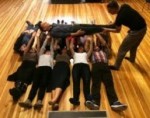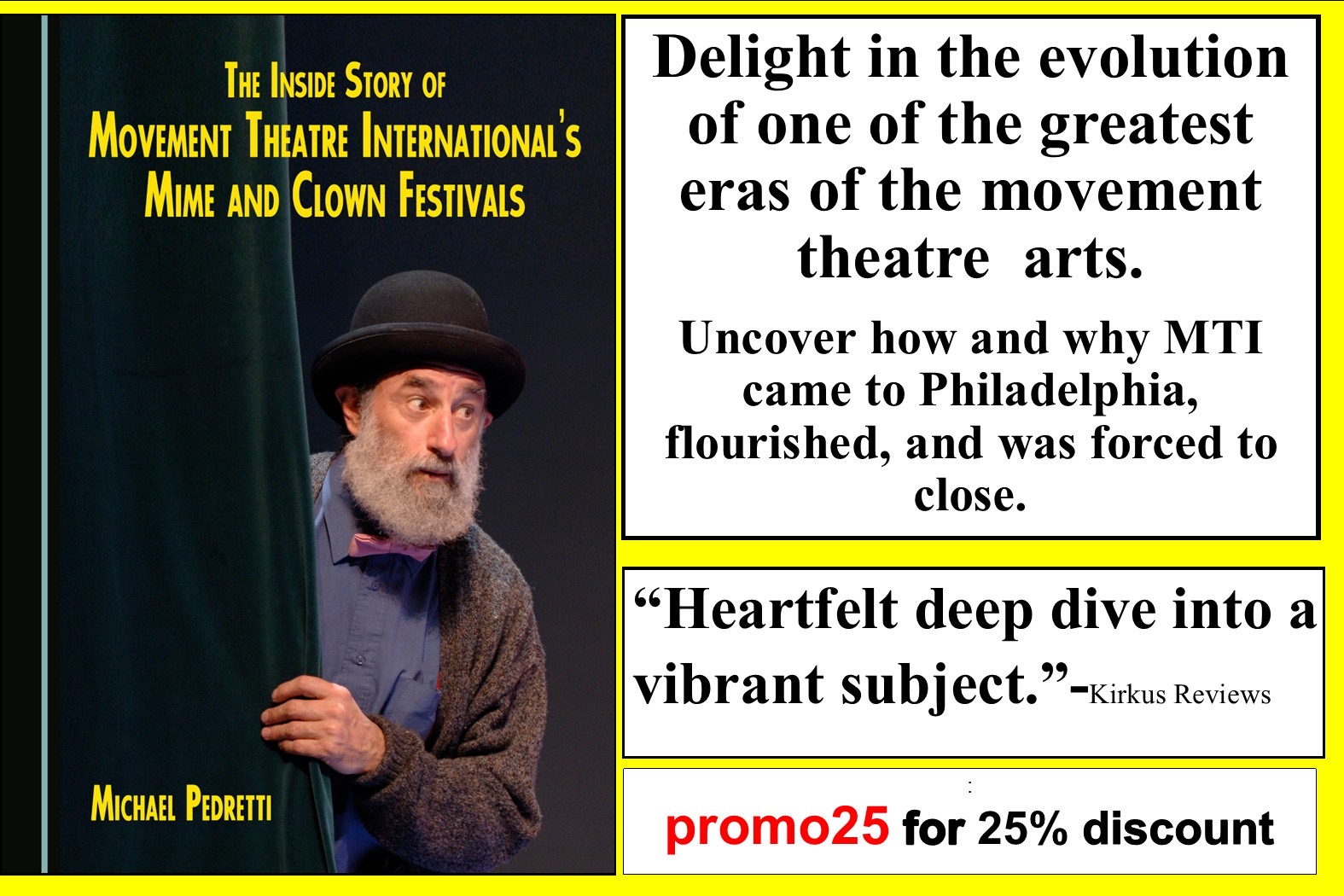
The Empathetic Art of Teaching: Two Weeks of Community Class with Peggy Baker
by Christina Gesualdi
Like a rescue plane hovering over my somewhat helter-skelter dancing life, Peggy Baker is a relief effort.What an insightful move by The Pew Center for Arts & Heritage through Dance Advance to bring Peggy Baker, a Toronto-based contemporary dancer, choreographer and well-seasoned teacher to lead a two-week, drop-in technique class for the Philadelphia dance community (yes, for free).
Peggy Baker is tall; even in the abrasive glare of the fluorescent work lights, her upper body seems to expand into space as if inviting warm sunshine to pour onto her chest and neck. Her legs are long and softly toned when still, but as she walks around the space, they propel, each asserted step matched with a buoyancy of her spine and head.
At 10:00am, Baker's dynamic fluidity is in stark contrast to the jarring rush of the city beyond the doors of the Performance Garage. I happily transition from a world of Monday morning traffic, where I am just another numb biking body caught in the horn-honking chaos, to a world of sensitivity.
Ms. Baker articulately demonstrates the initial floor exercise. She side-bends herself into a "C" shape, then arches, rounds and rolls with awareness and efficiency. As I embody this series of horizontal exercises, I sense how it prepares my body for the vertical movement to come. Besides just "showing" us the movement, Baker offers nuggets of wisdom throughout class. She warns against pure relaxation and instead advocates for activation and organization of the backs of the legs, arms, and core. She turns to our accompanist Tim Motzer, gestures at his guitar, and compares this concept to the way in which each string of a guitar is tuned with the correct amount of tension for the desired sound. At times she reinforces these ideas by zooming in, "Smear your guts and navel onto the spine as if you are spreading cream cheese onto a bagel." This nuanced image, so clear and accessible, gives my body so much more to work with than the trite cues, "Use your abs" or "Suck in your gut."
Teaching is more than simply stringing together complex steps and then getting dancers to imitate them. It goes deeper than rattling off laundry lists of adjustments. Baker, gentle yet rigorous, is both experimental and empathetic in her approach. Saturated with methods of integration, her teaching style builds intricately upon itself, bringing big ideas to the forefront through reinforcement, overlap, repetition, and elaboration. Peggy Baker offers an impassioned wake-up call to her students to analyze and organize action instead of getting caught up in shapes, steps, and counts.
One of Baker's strategies for organizing action is: "Think about the directions you are taking your weight in." She frames the content of the movement by stressing and repeating, "front, side, back, change diagonal, back, towards, away.”
She also categorizes all movements into four possible actions: "reach, push, pull, and grasp." Baker credits this functional method of paring down choreography by removing its qualitative complexities to Irene Dowd, her teacher since the 1980s.
Peggy Baker’s class offers balance to professional dancers who ping-pong between rehearsals and jobs, and delve into multiple artistic projects at once. She also considers the myriad of technical backgrounds, aesthetic priorities, and learning styles in the room.
I was amazed by how Baker's somewhat vertical and conventional modern class vocabulary empowered such artistic freedom from a diversity of movers. Dancers in leotards with meticulously pulled back hair found the bottom of their plies with simultaneous intensity and ease just before their pliant feet sprung them into the air. Others used breath and weight shifting to accomplish Limon or Humphrey-like objectives within Baker's material. Dancers wearing mismatched t-shirts and yoga pants seemed to switch between internal and external focus as they calmly collapsed, stabilized, and folded their joints. The somewhat crowded space of 18 or more dancers achieved a shared awareness that empowered them to navigate space like an experienced ensemble.
Baker's class is a trip into educational psychology. She has us thinking about "how we think", a skill that will inform our future movement practices and creative endeavors. In a more general sense, Baker leaves me with the belief that teaching is a nuanced and empathetic art that should not be taken for granted.
Peggy Baker Dance Projects will perform at the Harkness Dance Festival in New York City, Febraury 24-26.
Links:
http://www.peggybakerdance.com/home.html
http://www.peggybakerdance.com/upcoming/cities/perf_city_02.html
http://www.92y.org/Uptown/Dance-Performances-and-Events/Harkness-Dance-Festival.aspx
By Christina Gesualdi
January 26, 2012










